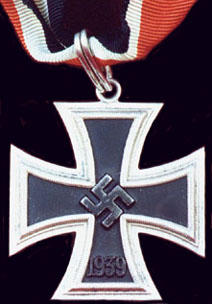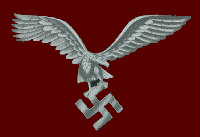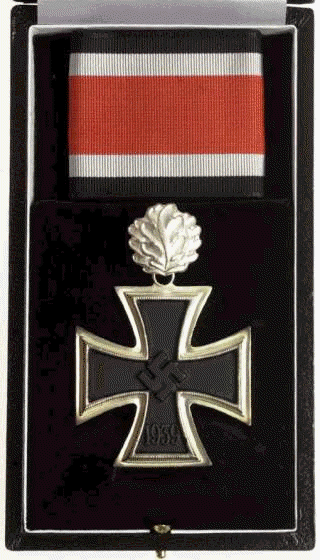|
|
|
 |
 |
Gallands Luftwaffe |
 |
 |
Knights Cross & Oak Leaves

|
During the Western campaigns it became apparent that a new grade would be needed to further distinguish those who had received the highest grade of the Iron Cross. On June 3rd, 1940 Hitler introduced the Oak leaves to the Knights Cross. The award was to be worn above the Cross, in the place where one would normally see the ribbon loop. Oak Leaves were not unprecedented in the history of German decorations as both the Pour le Merit and the Prussian Order of the Red Eagle had been graded with oak leaves and the Iron Cross 1870 had commemorated the 25th anniversary of the successful conclusion of the Franco-Prussian War with an Oak Leave Clasp. |
When presented the Oak Leaves the Knights Cross came in a box covered in black simulated leather. The lid of the box was lined with white satin and the base, where the Cluster rested, was covered in black velvet. After it was awarded the recipient would simply remove the suspension ring of his Cross and replace it with the Oak Leaves. The award also came with documents authorizing the presentation and wear of the award |
Criteria for the Oak Leaves was based on continued excellence in command, bravery of the highest order or actions of significant importance. Recommendations for the Oak Leaves were formally presented by the Commanding Officer and reviewed all the way to Hitler, who closely scrutinized each one and very often presented the award personally. The first recipient was Generaloberst Eduard Dietl, who received the Oak Leaves at the same time he was promoted to General der Gerbirgstruppe on June 19th, 1941 for his command in the capture of Narvik. Luffwaffe Major Walter Nowotny received his Oak Leaves upon destroying 189 enemy aircraft and Kriegsmarine Kapitanleutnant Heinrich Blechrodt was decorated with them on September 23rd, 1942, after sinking more than 200,000 tons of shipping. A total of 882 Oak Leaves were presented during the war, with eight additional being presented to members of Axis Allied armies as follows; Three Rumanian, two Japanese, and one each to a Finnish, Hungarian, and Spanish Officer. |